
Summer travel reflections from England: reality vs. technology
Monday, August 19, 2024
*Emily Chaffins
I knew something was wrong when the woman stood up from her airplane seat, stepping into the aisle with a serious look on her face. Uh oh - now an employee in a yellow vest was beginning to inspect the seat! What was going on? The flight from Miami to London Heathrow hadn’t even taken off yet!
“The piece holding the life vest under the seat fell off,” the woman explained. That meant the flight was delayed until the maintenance crew could repair it. Bummer!
While time stretched on as we waited for maintenance, I was inwardly grumbling about the inconveniences of travel. This June, I was in route to study in England for two weeks, excited to visit sites like London, Stonehenge, Bath - places I’d only ever read about in books.
At least in books, though, you don’t have flight delays!
But that’s what travel teaches you: to take the good with the bad, the convenient with the inconvenient, because watching a drone flyover of London on YouTube can never parallel the experience of the sights, smells, sounds, and tastes of the big city.
Living out the adventure
When setting off into the real world, rather than simply surfing the internet or reading a book, life is a richer experience. For instance, when you arrive in any small town in England, the first thing you notice are the flowers.
As a Miami girl, I’m not really accustomed to seeing as many flowers. England is absolutely covered in blooms of all shapes and sizes! Crimson poppies are scattered in town squares, bright yellow and purple flowers peek out of window boxes, and it seems every house has a mini garden of its own (which takes a lot of dedication and a green thumb that I don’t have!)
My photos definitely don’t capture the richness in color of the flowers I saw during my stay in Stratford-upon-Avon, where Shakespeare was born.
Studying Shakespeare in his hometown was what I was there for, after all. I’m a graduate student studying creative writing, so saying “I like books” is an understatement! Reading authors like Shakespeare, the Bronte sisters, Charles Dickens, and Agatha Christie is what made me dream of visiting England in the first place.
But books, as much as I love them, can’t replace real-life experience.
When I visited Bath in Somerset, I carried preconceived notions with me, based on the Jane Austen books and movie adaptations I loved. My mental image of Bath involved ladies in Regency-era dresses walking down flat, tree-lined avenues and clutching parasols! Which, to be fair, would be awesome.
In real life, Bath is an uphill battle (literally, those hills were steep!), but the scenery was even more breathtaking than I could have imagined. Those same hills that made me short of breath were “breath-taking” in another sense. The elegant stone houses looked as if they were stacked on one another in avenues of splendor!
Now, whenever I read about the Crescent neighborhood in Northanger Abbey, I have an infinitely richer image in my head because I’ve really been there!
Unexpected discoveries
In Bath, one of my favorite sites was Bath Abbey, nicknamed the “Lantern of the West” for its lantern-like structure. The Abbey is part of the Church of England. When I stepped into the dim interior of the church, I was in awe to see the intricately carved ceiling, which looks like something out of a Lord of the Rings movie! More than that, I was unwittingly stepping into a piece of Catholic history. On the site of Bath Abbey was originally a larger Catholic church!
Wherever I traveled in England, I was always coming across remnants of Catholicism - which I hadn’t anticipated at all, based on the relative smallness of Catholic parishes that I looked up on the internet before making the trip! Sometimes you come across Catholicism in obvious places, like the Tower of London, where saints like Thomas More famously spent their last days. Other times, though, you find traces of Catholicism in highly unexpected places.
Back in Stratford, I visited Holy Trinity Church, which is also Church of England. William Shakespeare is buried there. I also learned that Shakespeare’s father, John, was in charge of obliterating Catholic paintings in the church during the Reformation. However, John Shakespeare whitewashed the paintings, enabling the restoration of the paintings later on.
Did John Shakespeare, who was Catholic, whitewash the paintings as an act of defiance in order to keep England’s Catholic heritage alive for future generations? It’s a strong possibility, especially since many scholars agree that John passed on his Catholic faith to his son, William! If you’d like to learn more about William Shakespeare and Catholicism, I highly recommend Joseph Pearce’s The Quest for Shakespeare: The Bard of Avon and the Church of Rome.
Besides encountering more Catholicism than I’d expected, traveling allowed me to immerse myself in the country’s culture, like in the Cotswolds countryside.
In traveling, you learn the most epic facts that you wouldn’t have even known to look up on a search engine! Take Chipping Campden, one of many small towns in the Cotswolds. Apparently, the good people of Chipping Campden hold their own Olympics. The event wouldn’t be complete without a shin kicking contest (yes, it’s what it sounds like!) and a cheese rolling contest, where participants run downhill at high speeds trying to capture a cheese wheel (nobody has succeeded yet, according to my guide!)
On a more serious note, I gained an appreciation for the closeness of the English countryside’s communities during my stay there. Unknowingly, I happened to be visiting the Cotswolds on June 6th, the commemoration of the start of D-Day.
In America, we don’t commemorate this important day, but that’s far from the case in England. Each town I visited in the Cotswolds displayed decorated memorials for the fallen - people who had once walked those same streets. When I arrived in Chipping Campden, a prayer service was underway in the town center. I would never have been able to grasp the feeling of community in these small towns if I had not traveled there.
Moving beyond the digital
The importance of getting out into the real world hit me hardest when I took a boat ride down the Avon in Stratford. I was rocking with the boat, listening to the honking of swans and freezing to death in my scarf (Floridians aren’t built for that weather!).
That’s when I really understood how fake the best videos and photos are.
The water was gleaming and flowing like liquid glass, in a way that video could never fully capture. The experience of feeling the chilly wind and hearing the sound of voices drifting from the market across the water - the digital world could never replace that.
If I hadn’t gone to England in-person, I would never have found out that I prefer visiting small towns I’d never heard of to the famous Stonehenge. You also can’t taste warm, sweet Sticky Toffee Pudding through a computer monitor, either.
If traveling this summer taught me one thing, it’s that images on a screen can never hold a candle to actually getting out there and experiencing reality in all its glory, messiness, and surprises.
Photography: EMILY CHAFFINS | FC

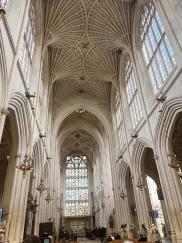
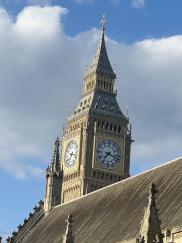
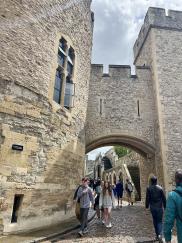
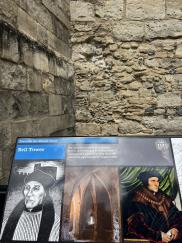
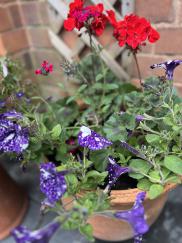
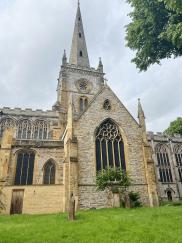
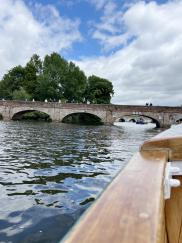

Comments from readers